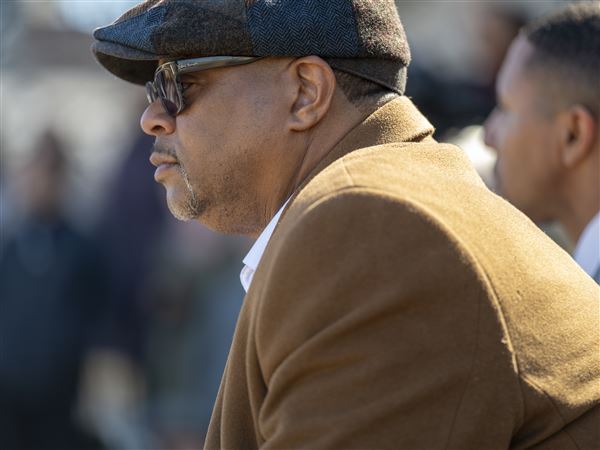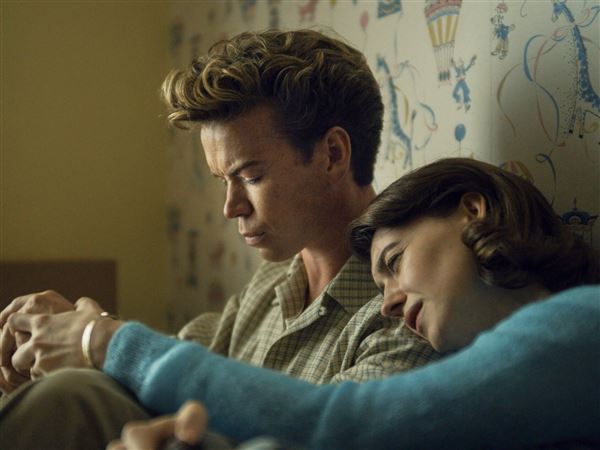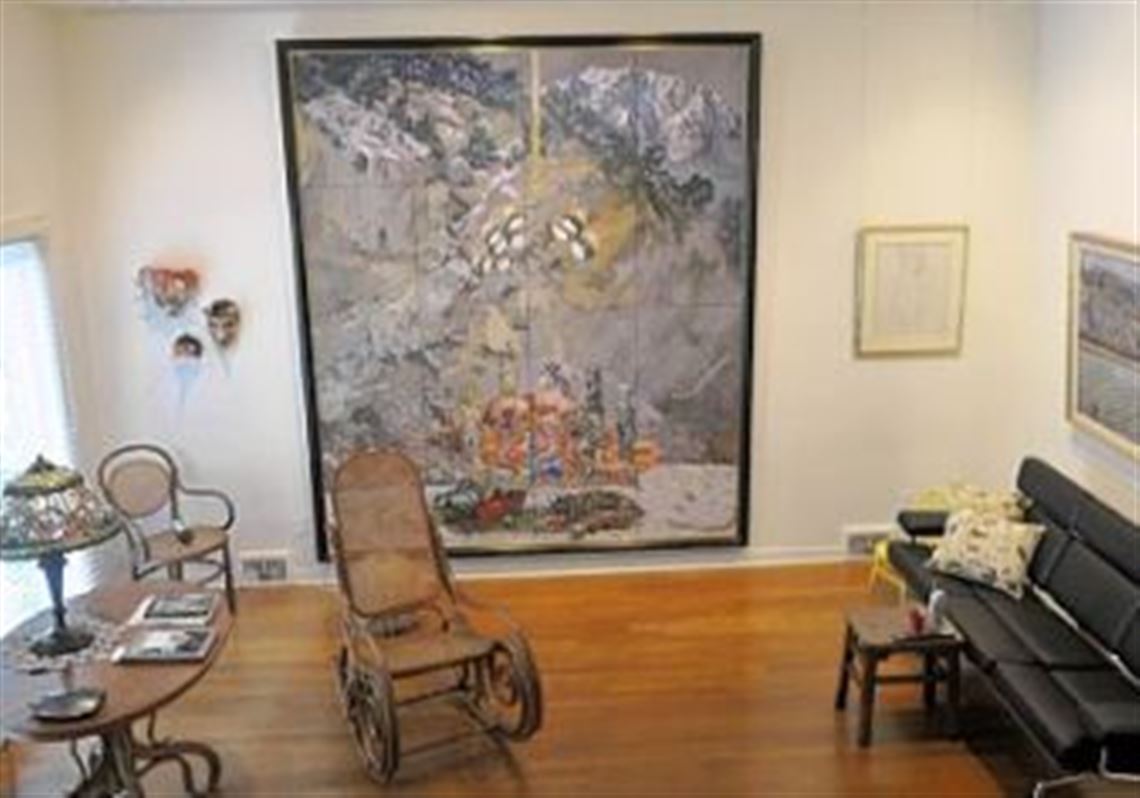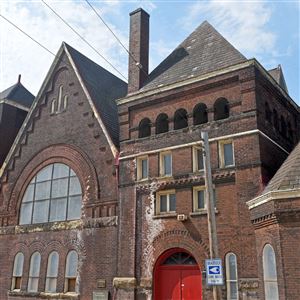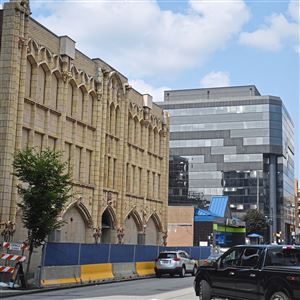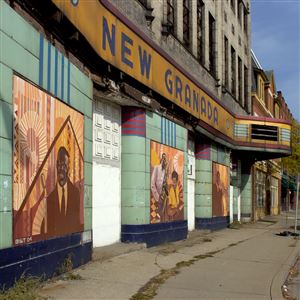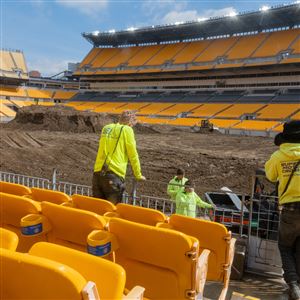After Henry Koerner arrived in Pittsburgh in 1952, the internationally known artist built a distinctive home on Negley Hill, taught art and painted the city regularly.
Still, Vienna remained his first love, frequent muse and the city where he spent most summers with his wife, son and daughter.
A native of Austria’s gilded cultural capital, Koerner began his odyssey by fleeing Vienna when the Nazis invaded the city in 1938. He lived in Italy, then immigrated to the U.S. a year later with the help of an uncle in New York City.
Koerner, who died 30 years ago, lived in a Squirrel Hill house built in 1966. He designed it with local architect Richard B. Righter; another architect, George L. Simons did the construction drawings.
Caroline Boyce, the house’s new owner, wants to ensure that it becomes a historic landmark. She started the process in June when Pittsburgh History & Landmarks Foundation, the city’s oldest preservation group, agreed to install a plaque at the Henry and Joan Koerner house.
Boyce, former executive director of the statewide nonprofit Preservation Pennsylvania, serves on the board of advisers for the National Trust for Historic Preservation. She plans to seek a state historic marker and nominate the house to the National Register of Historic Places.
“Henry liked the townhouses at Fifth and Negley” because they reminded him of traditional Viennese architecture, Boyce said.
“He wanted a detached house that was a place to paint, live, entertain and sell his work,” she added.
The late artist’s son, Joseph Koerner, is a professor of art and architecture on the faculty at Harvard University.
“He and my mother had a clear vision of what they wanted,” Joseph Koerner recalled during a Zoom interview.
The three-story, three-bedroom home features high ceilings and white walls that offer large spaces to display artwork. On Sundays, academics, lawyers and scientists gathered in the airy living room to eat Mrs. Koerner’s home-cooked food while discussing art, politics and religion, Joseph Koerner said. Sometimes he played the piano while his father sang.
More than 50 years later, the home’s front entrance still has a brass nameplate that says Koerner and a vibrant stained glass in its front door. Ten statues of cherubs the artist collected are arranged atop a wall above an outdoor courtyard.
Angels of America
Fortune favored Henry Koerner’s bold ambitions. He was in his early 20s when he arrived in Manhattan, where he found success designing book covers for mysteries and drawing colorful posters for the U.S. military during World War II.
After the Army drafted him in 1943, he served in Washington, D.C. and London, then sketched witnesses at the Nuremberg trials, drawing such infamous Nazis as Hermann Goring and Rudolf Hess. On leave one weekend, he returned to Vienna to learn that his mother, father and brother had died in the Holocaust.
After World War II, Koerner won national acclaim when Life magazine called an exhibition of his artworks in Berlin “the most important paintings to come out of the war.” By 1952, he was a 36-year-old artist in residence at the Pennsylvania College for Women, now Chatham University. He also taught at the Art Institute of Pittsburgh.
Between 1955 and 1967, he painted portraits of 41 famous people for Time magazine’s covers. He insisted on sketching his subjects — actors, authors, conductors, presidents, politicians, publishers and opera singers — in person. Julie Harris, starring as Joan of Arc on Broadway, was his first subject for Time.
“He actually posed them for several days. He would see an underside of people,” the artist’s son said.
Before painting a portrait for Time magazine, Koerner went scuba diving in the Virgin Islands with New York City Mayor John Lindsay. He also captured the young U.S. Sen. John F. Kennedy and his brother, Robert. He said that the younger Kennedy was a difficult subject who often kept the artist waiting.
To show the Army’s combat missions in Vietnam during the late 1960s, Koerner traveled to Southeast Asia before painting a fold-out cover illustration for Time of helicopters flying over the jungle.
His magazine portraits popularized Koerner’s name, but art critics and connoisseurs consider his magical realism paintings to be his best work. Those canvases often contrast the real and surreal while exploring loss, memory and trauma, subjects with deep roots in the artist’s psyche.
Dark memories of the Holocaust haunted Koerner, but light floods the Squirrel Hill home he built. Neither he nor his family members wore shoes indoors and the hardwood floors are in excellent condition. The Koerners furnished the house with Oriental carpets and bentwood furniture.
An electrician working on the house recently told Boyce that the eyeball-shaped ceiling fixtures designed to highlight artwork were cutting-edge technology when they were installed. The home's Arakawa picture hanging system, often used in commercial art galleries, also remains intact.
Boyce has purchased many of the Time magazine covers that feature the artist’s portraits. She also owns “New Diamond Market,” an evocative scene that captures a long-gone Downtown landmark where people shopped for food.
Boyce, executive director of the Ryan Shazier Fund for Spinal Rehabilitation, grew up four blocks away from the Koerner family's home. She said he designed the stained-glass window on the front door as a tribute to Margarete and Brigitte Heidelmeier, a mother and daughter he befriended on a Danube River beach near Vienna.
Joseph Koerner said that his family visited Margarete Heidelmeier at her home. “She wrote to my parents every year.”
His 2019 film, "The Burning Child," is a meditation on his father's life, work and Viennese architecture. The film was shown at the Jerusalem Film Festival in 2019.
Joseph Koerner said many people people in Pittsburgh did not know his father immigrated because of the Holocaust. “He settled in Pittsburgh because he got this job at the Pennsylvania College for Women.”
An avid bicyclist, Henry Koerner pedaled all over Pittsburgh and painted outdoors from a multitude of vantage points. He did the same in Vienna, where he was struck by a motorist while riding a bicycle and died at age 75 in July 1991.
“My father plumbed the mysteries of Pittsburgh as deeply as he did Vienna,” his son said.
Marylynne Pitz, a freelance writer, can be reached at mlpitz27@gmail.com.
First Published: July 29, 2021, 9:48 a.m.
Updated: August 2, 2021, 1:57 p.m.


